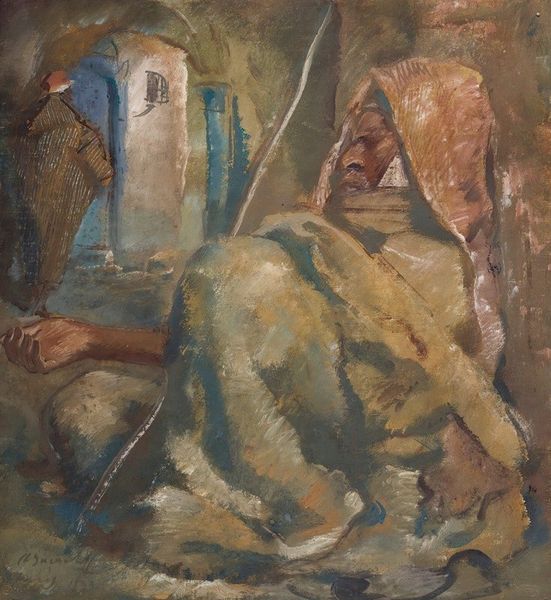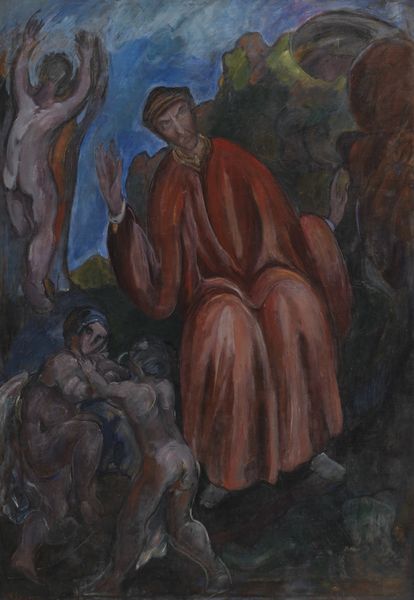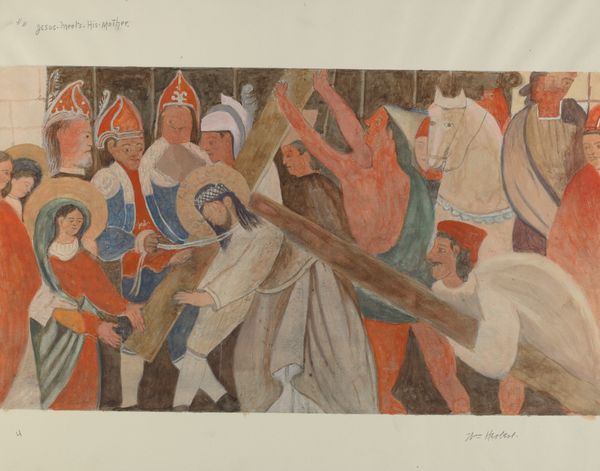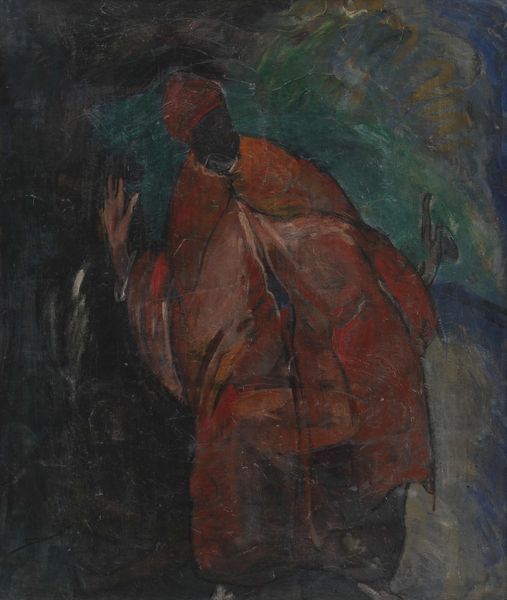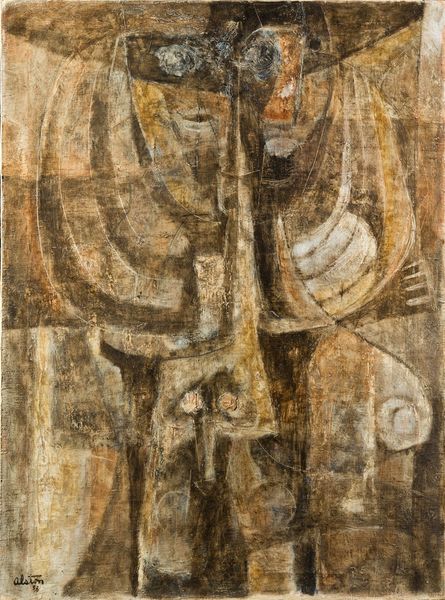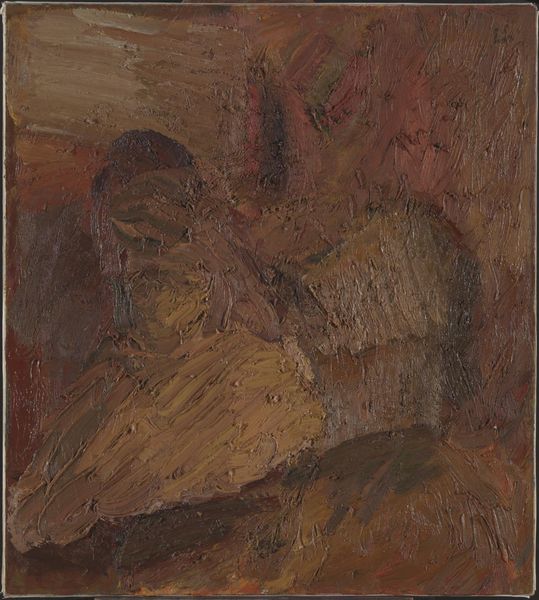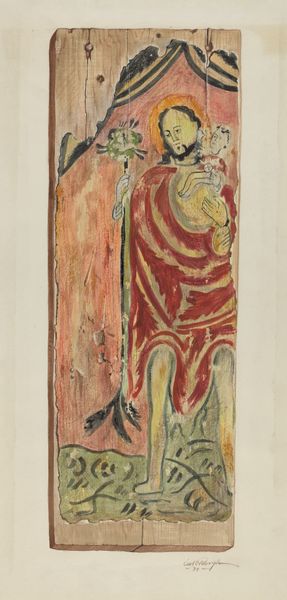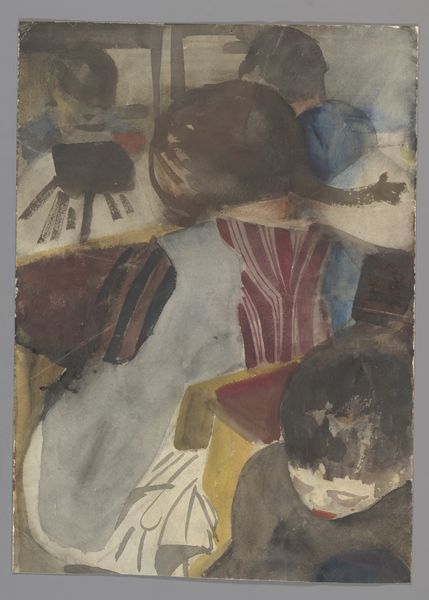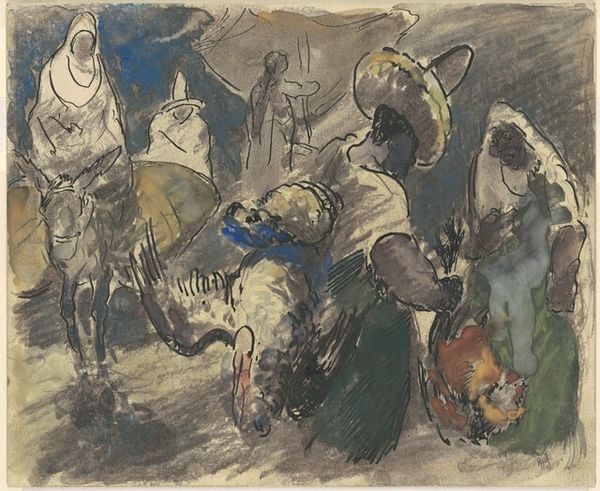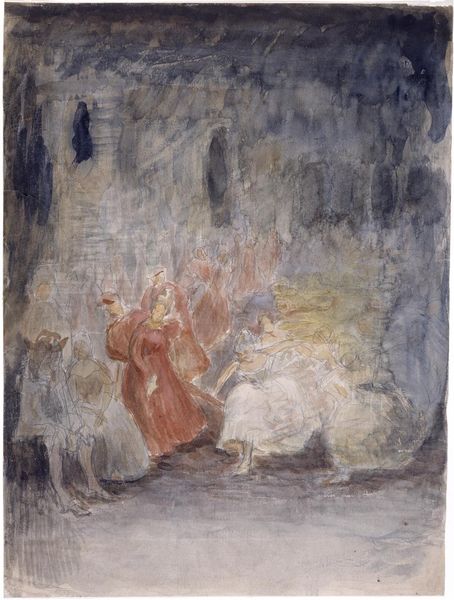
painting, oil-paint, canvas
#
narrative-art
#
painting
#
oil-paint
#
figuration
#
oil painting
#
canvas
#
underpainting
#
expressionism
Dimensions: 109.5 cm (height) x 80 cm (width) (Netto), 120.4 cm (height) x 91.3 cm (width) x 5.5 cm (depth) (Brutto)
Editor: Karl Isakson's "The Crowning with Thorns," painted around 1920 or 1921 with oil on canvas, presents a really powerful scene. The colors are muted, and the figures almost blend into one another, which creates a feeling of claustrophobia and tension. What's your take on how historical context influences how we understand this piece? Curator: Considering Isakson painted this right after the First World War, the theme of suffering and injustice takes on a broader socio-political meaning. The painting's expressive brushstrokes and simplified forms align with Expressionism, a movement that gained traction as a means of expressing collective trauma. Do you see how the formal elements of the painting amplify its historical significance? Editor: I do! The almost blurred figures make it feel like this isn't just about one man's suffering. It is like it symbolizes the widespread pain from the war that affected so many people, a group of people. Could the location where this artwork is housed now – the SMK – play any role in shaping its meaning, in your opinion? Curator: Absolutely. The SMK, being a national gallery, lends a sense of authority and public validation to Isakson’s interpretation. The museum setting invites a dialogue between the personal and the political, encouraging viewers to consider how institutions shape and frame narratives around faith and sacrifice. Think of it as the museum giving validation to the trauma Isakson is presenting. How does that make you think about museums differently? Editor: It makes me think about the subtle, almost invisible, power that museums wield, defining history and importance, even without saying a word. Thanks! This has changed how I'll be seeing art and its relation to socio-political power structures going forward. Curator: It's all about thinking critically about the silent narratives. Glad I could provide some insight.
Comments
No comments
Be the first to comment and join the conversation on the ultimate creative platform.
